Increase Your Profit Margins By Lowering Food Costs Without Sacrificing Quality
There are five simple ways to increase your restaurant's profit margins without sacrificing quality or your reputation:
- Save on costs by planning your menu around the seasons and seeking out local suppliers.
- With proper planning and budgeting, you can avoid overbuying ingredients and lower food costs altogether.
- Develop a menu pricing strategy.
- Negotiating new rates with your food supplier.
- Invest in restaurant management software and solutions to improve efficiency.
Since the start of the COVID-19 pandemic, the restaurant industry has undergone many changes.
Many changes are related to operations, workforce, menu creation, and supply chain management. From determining how to maintain traffic and revenue to analyzing inventory, COVID has pushed restaurants to operate leaner than ever.
As a result, restaurant and bar owners are looking for ways to reduce food costs while maintaining a profitable business with a top-notch reputation. If you are one of these restaurant and bar owners on a mission for success, we have some good news for you. You can absolutely increase profit margins despite this challenging environment without sacrificing quality or damaging the customer experience. Keep reading for our five profit-boosting ideas!
Here are five simple ways to increase your restaurant’s profit by lowering food costs:
1. Keep It Local
As you may know, the costs associated with transportation and storage of off-season ingredients can significantly impact your profits. With customers less inclined to dine out, now is a great time to allot your financial resources toward locally-sourced foods.
Save on costs by planning your menu around the seasons and seeking out local suppliers. Head over to your farmer’s market or visit local farms to expand your network and open up your access to food sources. Although some farms compete with wholesale food distributors, there is a small difference in cost.
Investing in locally sourced foods also allows you to connect with your community while promoting your business. A couple of advantages to working with local farms include fresher produce (straight from the harvest!) and the freedom to curate delicious seasonal menus.
Connecting with local food markets also allows you to build relationships in the community, which could lead to partnerships and potentially additional discounts and deals. Start by sourcing locally-grown produce and adjusting your menu as needed to see how the change affects your profits.
2. Cut Down On Food Waste
Throwing away food and leftover ingredients is like tossing money in the trash. Naturally, this has a negative impact on your restaurant’s profits. To get those numbers back on track, commit to cutting down on food waste! With proper planning and budgeting, you can avoid overbuying ingredients and lower food costs altogether.
Additional methods to reduce food waste include:
- Incorporate food scraps into your menu. Use your creativity to add a special of the day using the leftovers. You will intrigue customers by offering a new dish at every visit, while saving on costs in the long run.
- Preserve and store food properly, so it doesn’t spoil. For instance, freezing herbs in oil or canning leftover produce can be great ways to save ingredients that still have some life to them.
- Be mindful of portion sizes. Consider reducing the portion sizes if you see the same dishes returning to the kitchen with plenty of food left on the plate.
- Donate food to charity. You can make a positive name for your restaurant or bar in the community while helping those in need.
Install a Point of Sale (POS) system. This system allows your restaurant to do paperless orders, automate inventory captions, and report sales analytics to pinpoint exactly how much of an ingredient you need to purchase.
3. Adjust Your Pricing
When you develop a menu pricing strategy, you establish your restaurant’s identity in the marketplace. However, price adjustments are inevitable, particularly in times of economic or community change. In certain situations—like the pandemic—you will need to make appropriate adjustments to keep from losing business.
Many customers are coping with safety and financial concerns, so try adjusting your prices accordingly and see how the changes affect your restaurant or bar’s traffic. Reducing costs on certain menu items may attract new customers, convert occasional buyers into regular buyers, and appeal to families.
More customers making purchases at lower price points can ultimately be better for your business than fewer customers paying higher price points — especially as you seek to rebuild a tentative customer base.
You will also want to take time to assess your restaurant’s revenue and expenses. Where are you losing money? Is there a dish that isn’t selling as well as you thought it would? You may find that you’re spending a fortune to keep it on the menu.
Look over your menu to determine whether you have dishes that put a hole in your restaurant’s pocket. By making adjustments to your prices and altering your menu, you could increase profits and traffic.
4. Negotiate With Your Food Supplier
You may be able to lower your food costs by negotiating new rates with your food supplier. Consider discussing bulk rates with your supplier to see if you can get a discount. If you can’t meet a fair rate, don’t be afraid to research alternative suppliers, different brands, or other products that can serve your restaurant’s needs at a lower rate.
Be aware that some vendors can be overpriced for your market, so consider connecting with a local supplier. There’s a diverse assortment of suppliers ranging from national wholesale food suppliers and organic suppliers to farmers and butchers.
As for bars, there’s no shortage of beer and wine suppliers. We recommend getting quotes from various suppliers and then determining the most cost-effective options for your restaurant. There’s no reason to stay with a supplier if it costs you more than it should. You may find that negotiating or connecting with a new supplier is a practical and profitable decision for your restaurant or bar.
5. Adopt Tech To Manage Operations
Time is money and, as a restaurant owner, you don’t want to waste either! It’s time to put an end to ineffective operations, such as poor inventory management, poor employee management, and outdated technologies that can’t properly serve your customers. For example, when your inventory is disorganized, you don’t know what you have in stock or need to buy. This can lead to overspending and food waste.
Instead, you need a system that keeps everything managed and organized, from pay stubs and timesheets to inventory tracking and menu pricing.
A POS system is an advanced processing system that allows your restaurant to:
- Keep track of your inventory: menu items, ingredients, and kitchen equipment;
- Create inventory management reports;
- Access mobile and contactless ordering solutions;
- Manage staff, track timesheets, and calculate wages and taxes;
- Be user-friendly for delivery companies, bars, taverns, and restaurants;
- Manage business finances.
A POS system is highly effective in keeping track of your restaurant or bar’s finances while increasing your profit margins and giving your customers quality service. When your point of sale system makes sense, everything falls into place!
If you’re feeling exhausted by an outdated system and want a growing and flourishing restaurant or bar business, consider this your sign to upgrade to a new system. The most successful restaurants are the ones that prioritize efficiency. Set yours up for success!
Need more guidance for incorporating a restaurant management POS system? Total Touch is here to help! Contact us today to request a free POS software trial.





